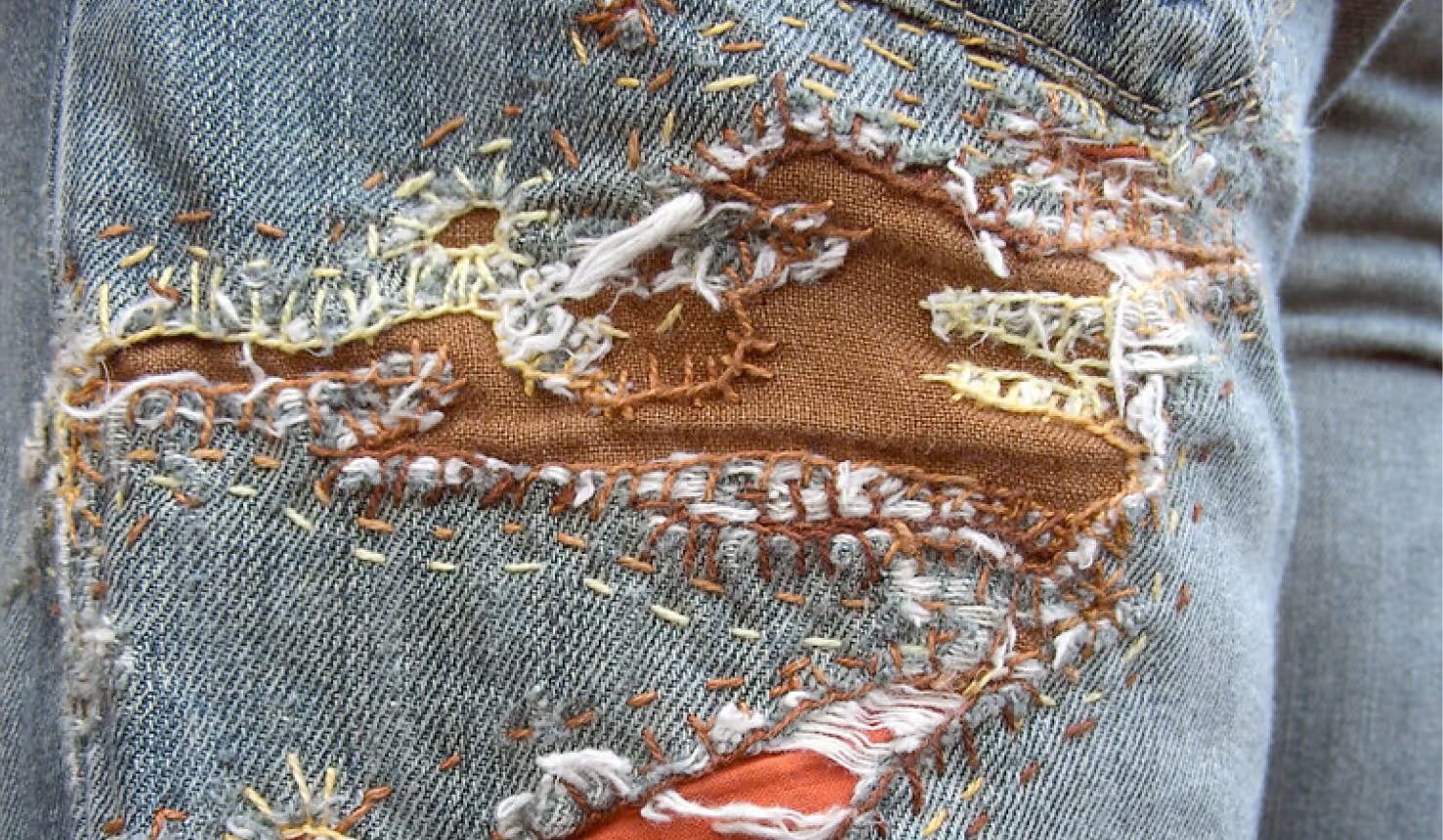Mending Clothes as Climate Action

Join the community





A few generations ago, fixing a hole in your jeans or a rip in your shirt was a reason to bust out the sewing kit or head to the tailor. But now, only 30% of Americans mend their own clothing. Globally, we toss out a garbage truck’s worth of apparel every second.
Unfortunately, this churn-and-burn dynamic is tough on people and the planet. Treating clothes as if they’re disposable fuels overconsumption and the success of the extremely wasteful fast fashion industry. All while it’s draining our bank accounts. The average American household spends over $1,400 on apparel every year.
The fashion industry produces around 8% of global emissions. In particular, fast fashion (and ultra-fast fashion) also exploits low-wage workers in developing countries to keep prices cheap.
The modern mending movement is on a mission to change all that with just a few stitches.
Fast Fashion Gave Rise to “Disposable Fashion”
With thousands of new styles everyday, brands like Shein are propagating overconsumption at breakneck speeds. They tap into microtrends that are here one week and gone the next. To make the micro-trendy clothes, Shein, Boohoo, and other fast fashion brands use cheap, plastic fabrics, exploit workers with reprehenxible labor practices, and encourage us to by more clothes than we need.
Since fast fashion items are poorly made and cheaply produced, they end up in landfills early and often. In fact, a rubbish truck full of clothes ends up is landfilled or burnt every second.
Mending is not only a way to keep our clothes out of landfills, it’s a way to boycott overconsumption and fast fashion.
Mending for Sustainability and Style
The rise of fast fashion has dramatically shifted our relationship with our wardrobes. The global fashion industry produces 80-150 billion garments every year. We buy 60% more clothing than we did 15 years ago, but keep items only half as long.
Our clothes are extensions of our identities. While sustainable brands and rental models are shifting the fashion paradigm, buying less is still the best way to manage the carbon impact of our wardrobes.
Mending encourages us to keep our clothes wearable for as long as possible. Visible mending takes this a step further by mending clothes in a way that celebrates rather than hides the imperfections.
Defaulting to mending before dumping or even donating our clothes gives us extra appreciation for the materials, skills, and other resources that go into every piece of clothing.
A Resurgence of Modern Mending
Shifting social values are changing fashion trends, giving mending a major resurgence. A 2020 survey found that over a quarter of British consumers were reusing or recycling clothing more than usual. As folks seek to get more life out of their clothing, they’re heading to local tailors and even using apps like Sojo and The Seam to find them.
DIY mending is also gaining steam. Scroll through TikTok or Instagram and you’ll find hundreds of thousands of #mending and #rework posts sharing DIY tips, tricks, and finished products. In cities around the world, you’ll find pop-up repair shops and events teaching young folks to sew and repair their own clothing.
Mending clothing isn’t just sustainable, it can save you money. While prices vary, it’s often cheaper to get garments repaired than to replace them. You’ll save even more by learning to mend on your own – and it’s easier than you think!













